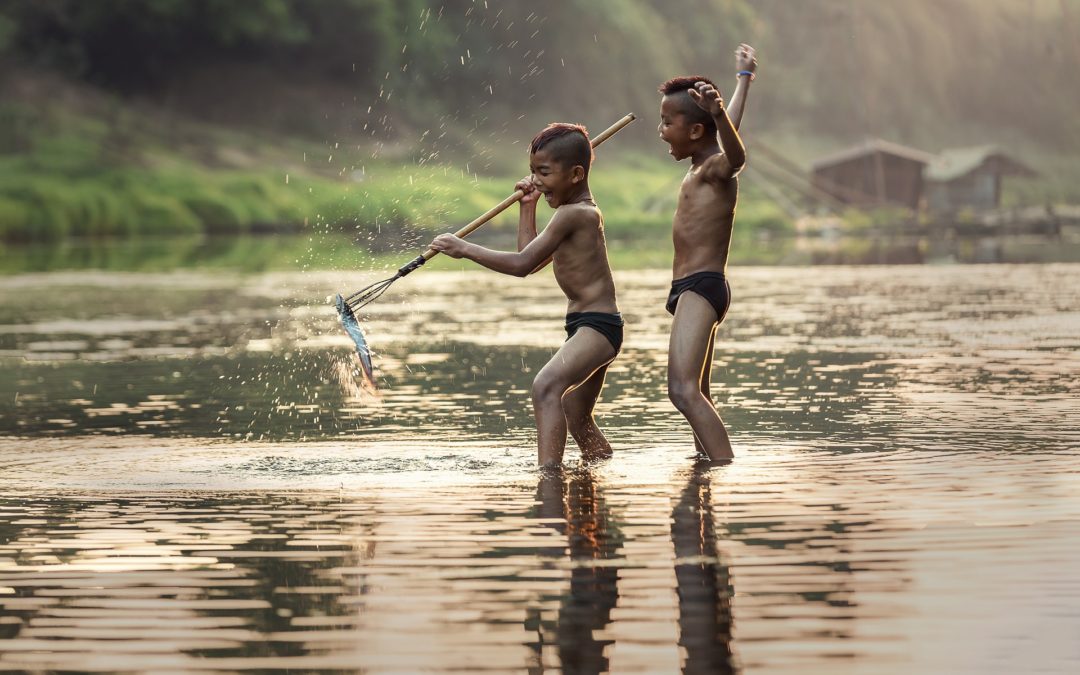It’s early June, and the stifling, hot season has come to an end. The prevailing winds of the southwest monsoon start to blow, and soon enough, dark clouds gather, signaling the beginning of Cambodia’s wet season. It’s a welcome relief from the months of heat, and also heralds the start of a new rice season. But, it’s not only rice that the farmers will yield. The fields will become home to an incredible variety of animal and plant species, that will inhabit this temporary wetland for the coming months, providing nutrition and food security for the rural population. Rice field ecosystem, an explosion of life!
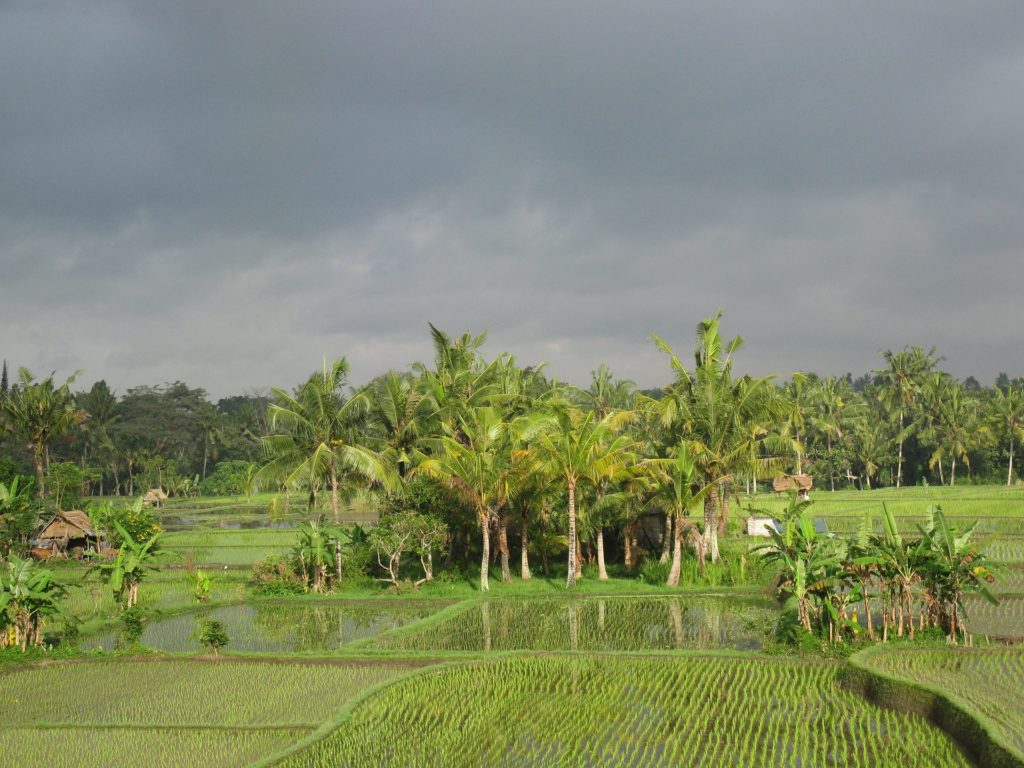
Rice Field – Rural Cambodia
The rice fields of not only Cambodia, but all of South-East Asia, play an integral part in their culture and life. Nearly, every rural household will own a small to a medium plot of land where they can grow this Asian staple. Usually, it’s rice in the wet season and some variety of vegetables in the dry season.
Rice can be harvested twice a year, however, during the off-season, it can be more of a challenge. The farmers rarely possess the knowledge, or technology, that off-season rice requires. There is also the issue of water and fertilizers, which do not come cheap, albeit, too expensive for the farmers to handle.

Still, the majority of Cambodian rice fields, use traditional farming methods. When the ground is wet, they employ a plough, driven by either ox or water buffalo. This occurs in either May or June. The soil is ploughed to a depth of 10cm, and depending on soil conditions, may need to be ploughed again in 3 to 5 weeks.
All rice crops are manually transplanted. Either by, transplanting seedlings from a nursery, or broadcasting. Transplanting seedlings is very labor intensive, as opposed to broadcasting. Broadcasting, scattering seeds over a wide area, can only be done in the wet lowland areas and does not require much labor, hence, a much cheaper option. Most of Cambodia’s rice fields are considered lowland.

Then, not before long, the rains come. Consistent, tropical downpours will fill the rice field with an abundance of water. Soon after, this temporary wetland will become home to a large variety of plants and animals, in what can only be described as, an explosion of life. Rice field ecosystem, an aquatic wonderland!
An Explosion of Life
Not long after the first monsoon rains, an ecosystem, rich in bio-diversity, has sprung! Rice fields are dynamic and rapidly changing ecosystems, that alter with each different growing stage of the rice and provide a haven for a vast number of plant and animal life. It is the best time of the year for Cambodian farmers!
Fauna – Rice Field Ecosystem
Fish
The fish that enter this temporary ecosystem, use it as a haven. They source nutrients, and organic material necessary for feeding and spawning. The farmers will also set up fish nets in the fields, and check them every afternoon for what will become dinner. The Cambodian people enjoy eating fish from the fields, as opposed to shopping at the local market. It makes sense, after all, fresh is best. Here they will find Walking Catfish, Striped Snakehead Fish, and Climbing Perch along with a numerous array of smaller fish species. As the Cambodian saying goes, “if there is water, there is fish”.
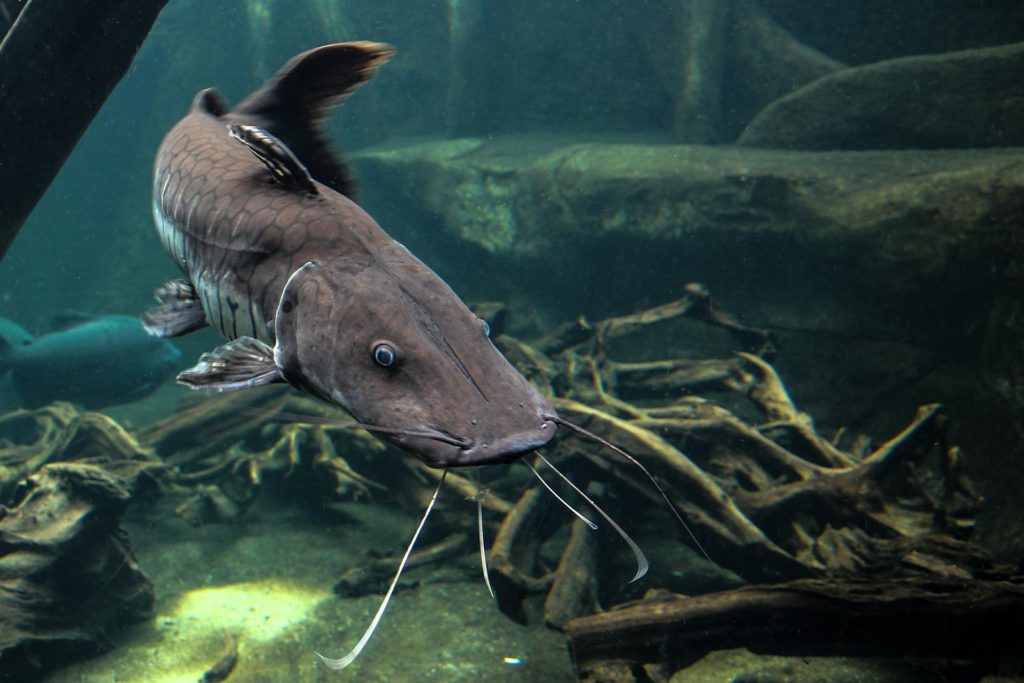
Snails
Snails (Golden Apple Snail) – Considered a delicacy in Cambodian culture. They were originally introduced in 1995, as food for humans. Since then, they have become a bit of a nuisance to the rice. If not controlled, or caught, they will eat the young rice seedlings. Nevertheless, they provide food for the rural countryside and can be found at most street food vendors in the towns and cities. Steamed up, using garlic, chili, lemongrass, and kafir lime, they have become the escargot of the southeast.
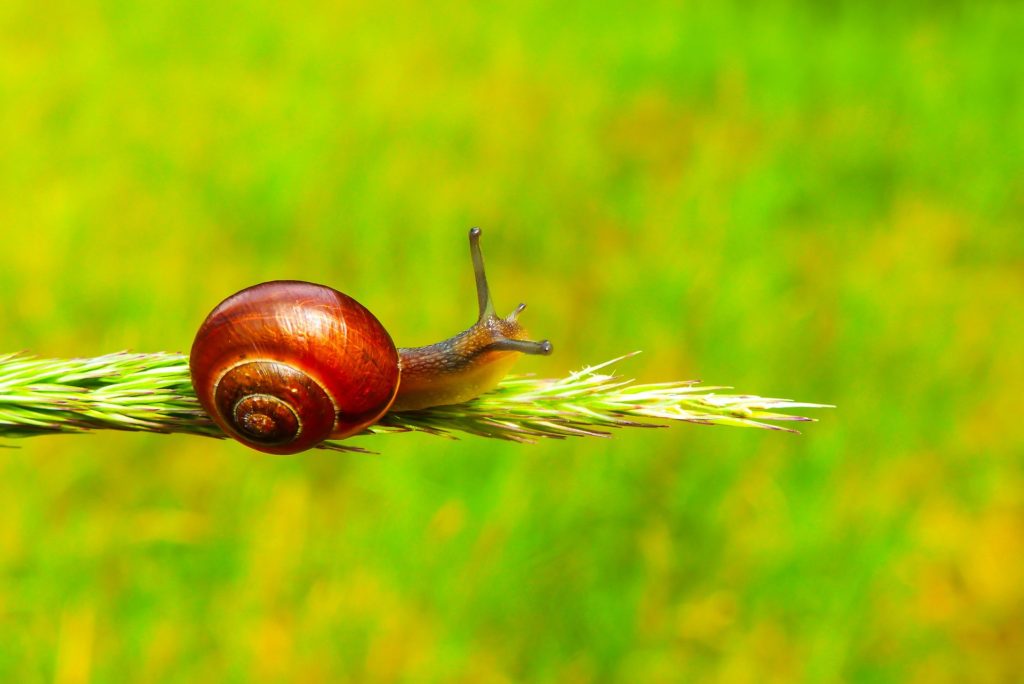
Rice Paddy Crab
These small crustaceans can be smelt a mile off. Rice paddy crabs are widely eaten throughout Cambodia. They are easily found in the ridges of the rice fields after they have dried out. It is best to prepare them while they are still alive, as they tend to smell quite strong when they die. A very popular method is to throw them in a papaya salad, with lots of chilies. Or, they are boiled up, or mixed with salt and roasted.
Frogs
When the rains come, the frogs come! Known as Boie’s wart frog, Rice Field frog, and Asian grass frog, these animals provide high protein, vitamins, and omega-3 acids. They are very easy to catch. Just shining a torch on them leaves them stunned, like a deer in the headlights. Most commonly, they are deep fried and taste like somewhere between a chicken and a fish. Surprisingly, they are quite meaty and provide a lot of substance to a meal.
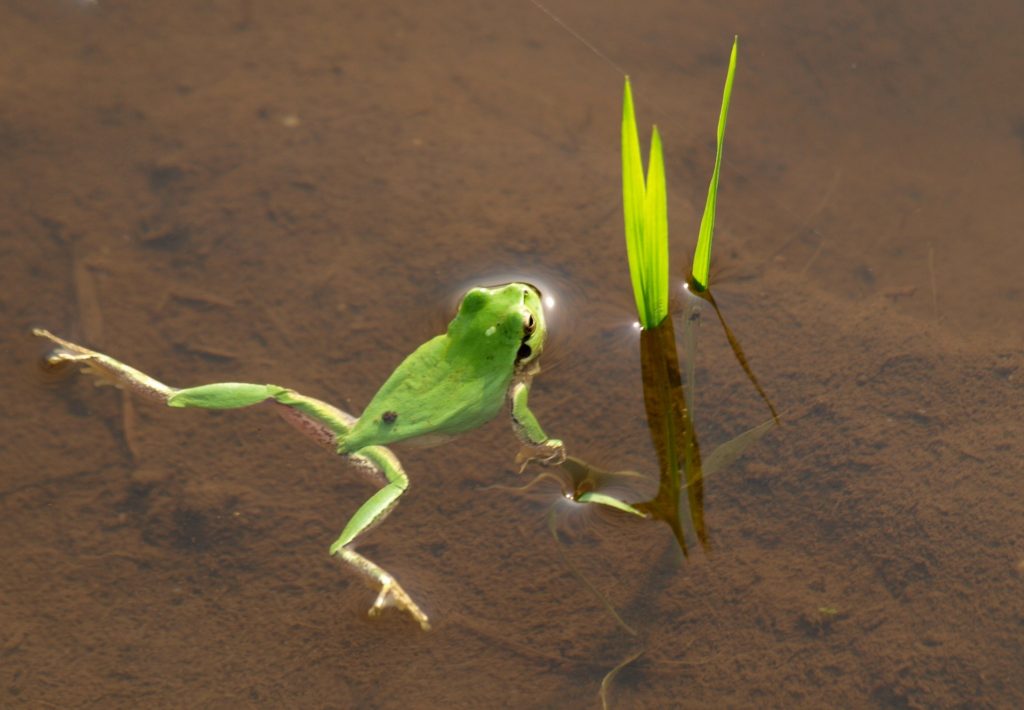
Insects
The rice fields are plagued by insects every year…..some good, some bad! Crickets, grasshoppers, leafhoppers, caterpillars, bugs, and worms (just to name a few) will be found creeping around, adding to the amazing bio-diversity of these fields. While most of them are not so good for the rice, and if not controlled, can be devastating, they still seem to find their way to plates in the kitchen. Crickets and grasshoppers, especially, are very tasty when fried up with salt and chili and will be displayed in a mound on the street food carts around the country.
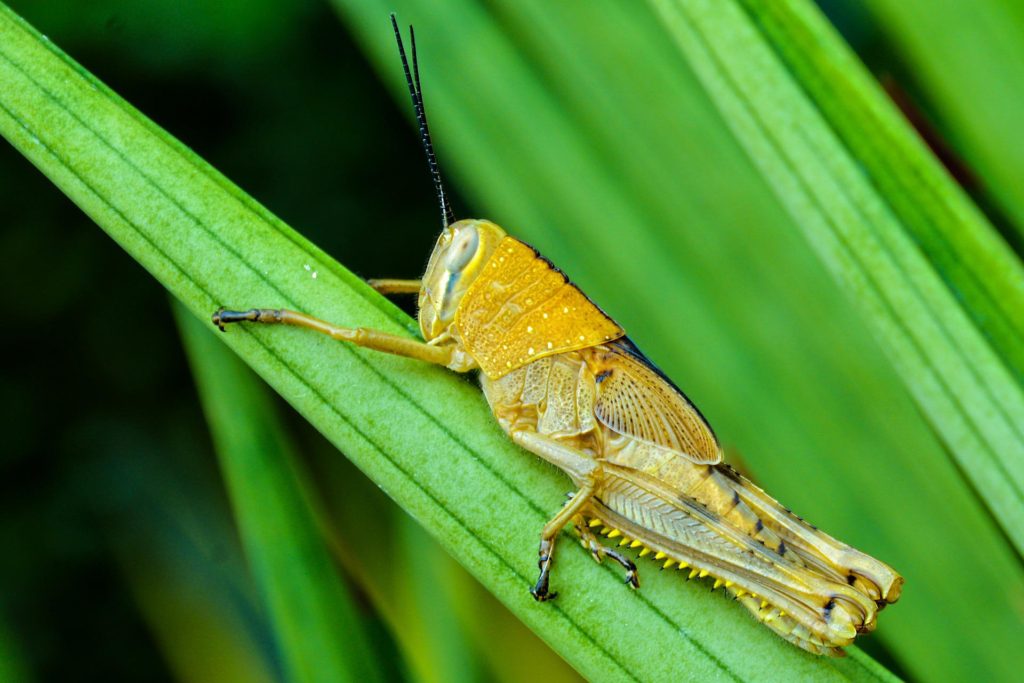
Birdlife
Flooded rice fields also provide the perfect habitat for different species of birdlife. Here they will come and nest, eat and reproduce during the 5 or so months, of this temporary wetland.

Flora – Rice Field Ecosystem
Not only animals, but plants add to the bio-diversity of this temporary wetland. In the fields and on the banks and levees, over a hundred species of edible, wild herbs flourish. Wild grasses and weeds also appear, providing a habitat for spiders and insects, and also acting as perches for insectivorous birds.
As you drive through the countryside you will always encounter people foraging around the rice field, scooping up leafy herbs to add to their evening meals. Wild grasses are also cut into bundles, providing food for their cows.

Conclusion – Rice Field Ecosytem
Come early December, the rains have receded, and the rice is ready for harvest. The water dries up, snails and crabs hibernate in the mud, and this temporary wetland disappears for another six months. What was an explosion of life, an ecosystem rich in bio-diversity, tucks its head in, until the monsoons drift in again next year.
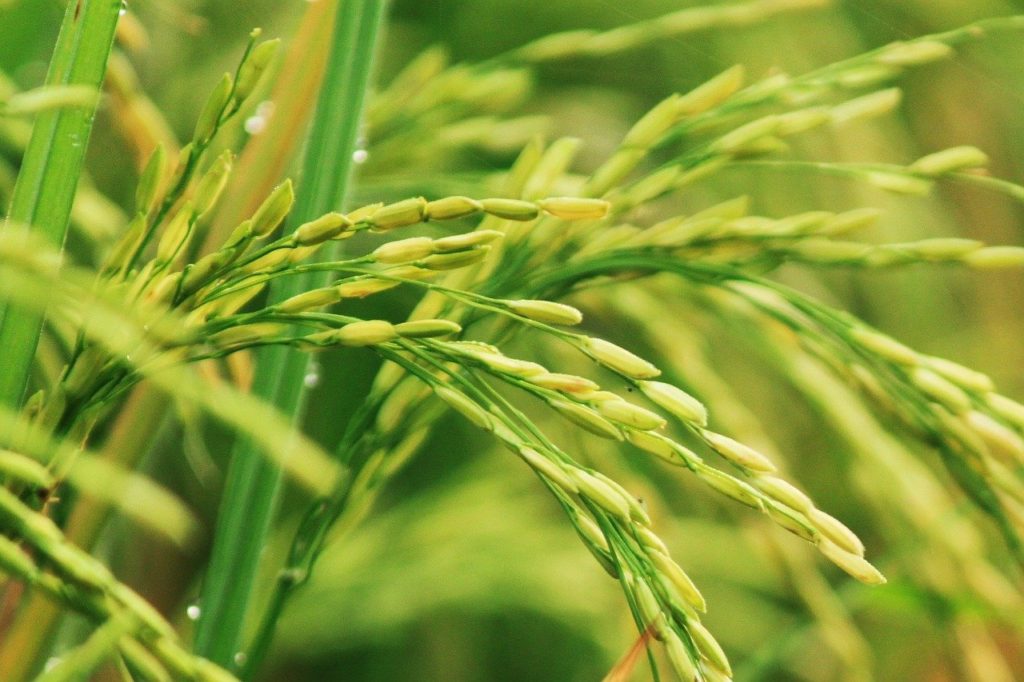
For the rural population, mostly, they have harvested enough rice to get them through to the next season. The rice fields will be turned over, and more than likely another crop planted, Yet, for the farmers, the rains can’t come soon enough. Rice field ecosystem, an explosion of life!
Thanks for visiting Mangoes and Mandalas. Please share this blog if you enjoyed reading, and don’t forget to follow us on Instagram.
Click on the links above to view some authentic Cambodian recipes and feel free to leave any comments below!


